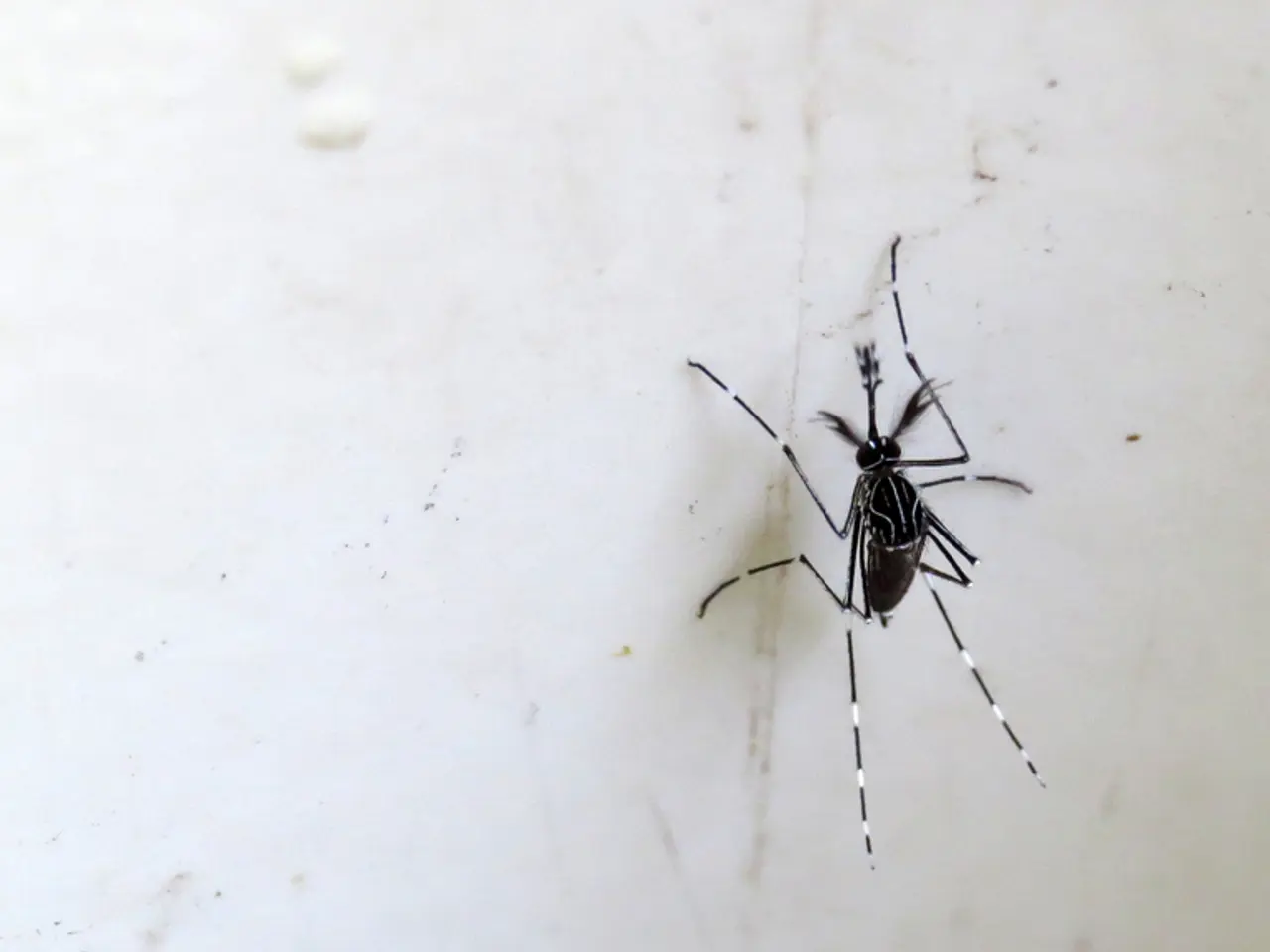Is there cause for concern in Germany regarding the chikungunya virus?
In recent news, there has been a growing concern about the Chikungunya virus in Germany and its neighboring countries. Here's what you need to know about the virus, its prevention, treatment, and current status.
The Chikungunya virus, named after a Bantu word meaning "the one who walks bent over," is primarily transmitted to humans via the bite of an infected female Aedes mosquito. The virus has been detected in 119 countries around the world, including Germany.
Recent reports indicate that a person has contracted the virus in Alsace, just a few meters from the German border. This marks the first known case of local transmission in Germany. In neighboring France, there have been around 800 imported cases since May, and 12 recorded instances of local transmission.
Preventive measures against the Chikungunya virus focus primarily on vector control and vaccination. In Germany, key strategies include eliminating mosquito breeding sites by removing standing water in places like flower pots, buckets, toys, and rain barrels; covering and regularly changing water in bird baths; and employing mosquito repellents and protective clothing to avoid bites both abroad and upon return, to reduce the risk of transmission.
For those traveling to endemic areas or working with the virus under regulated conditions, two vaccines against the chikungunya virus have been approved by Germany's Standing Commission on Vaccines (STIKO). The commission currently recommends vaccination for these individuals, but not for the general population.
Regarding treatment, there is no specific antiviral therapy for the Chikungunya virus; management is symptomatic and supportive. This typically involves rest, hydration, and drugs to relieve fever and joint pain. Patients who have contracted the virus are advised to use mosquito protection measures at home after infection for at least three weeks to prevent secondary transmission.
Public health guidance includes surveillance, awareness campaigns, multi-sector coordination, vector monitoring and control, tailored to the assessed local risk level. Heightened response actions are taken in areas where Aedes mosquitoes are present.
Mosquito and other pest species that are native to warmer climates are moving further north as weather conditions warm due to climate change. Tiger and yellow fever mosquitoes, previously non-existent in Germany, are now widespread in Bavaria, Baden-Württemberg, Rhineland-Palatinate, and Hesse. The risk of major outbreaks in Central Europe is not particularly high at present.
In conclusion, the measures taken to prevent, treat, and control the Chikungunya virus in Germany align with the latest recommendations by German health authorities and the European Centre for Disease Prevention and Control (ECDC). It is crucial for individuals to stay informed, practice preventive measures, and seek medical attention if necessary to minimize the impact of the virus.
- Science plays a vital role in understanding the Chikungunya virus, a disease transmitted by infected female Aedes mosquitoes.
- The virus has spread to over 119 countries, affecting regions even in Germany and its neighboring nations.
- In a recent incident, a single case of local transmission has been reported in Alsace, near the German border.
- France, on the other hand, has registered around 800 imported cases since May, with 12 instances of local transmission.
- To combat the virus, preventive measures such as vector control and vaccination are crucial components.
- Vector control strategies in Germany involve eliminating mosquito breeding sites, using mosquito repellents, and wearing protective clothing.
- For those traveling to endemic areas or handling the virus under controlled conditions, approved German vaccines offer protection against the Chikungunya virus.
- Vaccination is only recommended for specific individuals by the Standing Commission on Vaccines, not the general population.
- Since there's no specific antiviral therapy for the Chikunugya virus, symptomatic and supportive management is essential.
- Recovered individuals are advised to take mosquito protection measures even upon return home for at least three weeks to prevent further transmission.
- Public health guidance targets surveillance, awareness campaigns, multi-sector coordination, and vector monitoring and control.
- Heightened response actions are enacted in regions where Aedes mosquitoes pose a significant threat.
- climate change facilitates the movement of pest species like Aedes mosquitoes from warmer climates into northern regions, such as Central Europe.
- In Germany, tiger and yellow fever mosquitoes that were previously absent have now become widespread in Bavaria, Baden-Württemberg, Rhineland-Palatinate, and Hesse.
- Despite the expanded mosquito presence, the risk of major outbreaks remains relatively low at present.
- Educational resources and self-development materials should focus on the importance of staying informed and adopting preventive measures.
- Health and wellness, including fitness and exercise, are equally important in maintaining general immunity and resilience against infectious agents like the Chikungunya virus.
- The environmental science industry must address the challenges posed by climate change to both control the spread of infectious diseases and safeguard biological diversity.
- As the virus primarily affects humans, medical-conditions related to chronic diseases and respiratory conditions deserve special consideration when developing preventive programs.
- The finance industry has a crucial role in facilitating investments in research, medicine, and infrastructure to combat and control infectious diseases.
- Energy is another essential factor, as the widespread use of energy-efficient devices helps reduce the carbon footprint and contribute to mitigating climate change.
- The industry must prioritize cybersecurity measures to protect sensitive health data and ensure patient privacy in the digital age.
- In the realm of lifestyle, adopting good skin-care habits, maintaining proper nutrition, and staying active can boost overall health and help combat potential threats like the Chikungunya virus.




